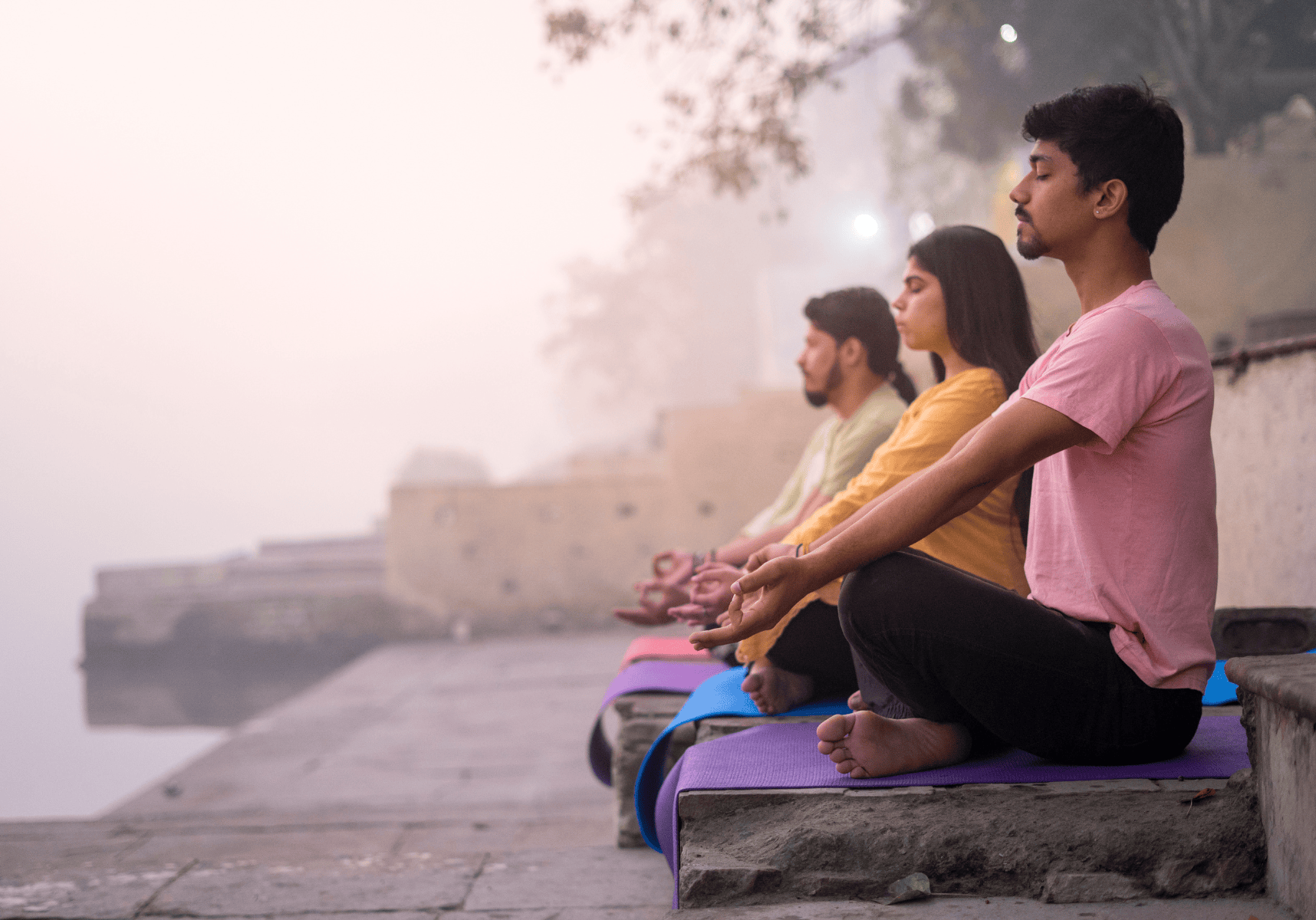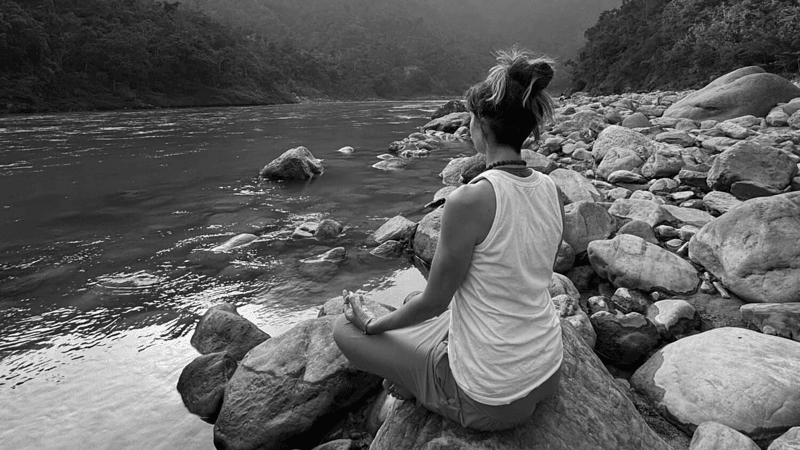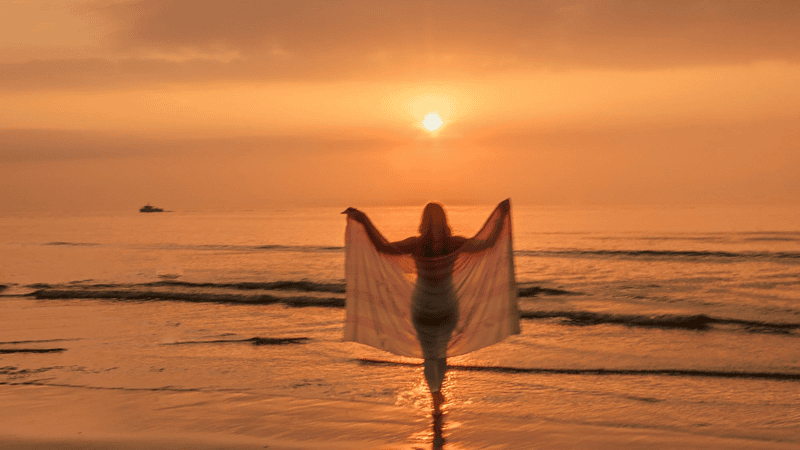
Deepening your Yoga Practice with Vedic Astrology
“Jyotish,” also known as Vedic Astrology, is the science of light (“jyoti” meaning light). Light not only refers to the light coming from the planets in our solar system, but more so, the divine wisdom or illumination that it can reveal through your horoscope, especially about your life direction and karmic bindings.
Reading time: 5 minutes
One of the most useful aspects of Jyotish is to understand the “why” behind our life journey: why did I marry this person, why did I move to this city, why did I disconnect with my family, why can I not find a fulfilling career, why am I facing this health problem, and the list goes on.
Science behind Astrology
According to modern science, time and space are interconnected to create the fabric in which we exist known as space-time. Fixed stars and planets affect this fabric, influencing us on a very subtle, energetic level. Though planetary alignments appear like small points of light from a distance, their energy fields are present on Earth. Astronomy has proven how planets are responsible for formations that sustain life on Earth. For instance, the planet Jupiter has protected life on Earth for hundreds of millions of years by shielding us from comets. In the astrological realm, Jupiter offers protection where it is placed in your horoscope and acts as a sort of guiding light in our birth chart as well as during its current transit. As such, planetary movements have a subtle vibrational impact on our bodies and minds.
Jyotish and its sister science, Yoga
Jyotish is a way of seeing, a seeing into the deep patterns of life--material as well as subtle--in order to gain insight into their structure and movement. Similar to yoga, its sister science, Jyotish is a spiritual discipline. In yoga, we learn the practice of balancing the five elements within the body through postures (asanas) and breath control (pranayama). Astrology, too, attributes the five elements to the planets and the zodiac signs, offering insights into our inherent characteristics and tendencies, revealed in our horoscope.
Yoga and Jyotish thus complement each other. Whereas Yoga aims for transcendence of time and space, Jyotish aims for greater understanding of their unfolding. Time and space form the dimensions of our existence in this manifestation. Yoga understands them as veils upon reality and aims to dissolve them. Jyotish understands our journey through time and space as meaningful and aims to illuminate it.
Your personal birth chart
Once we know more about ourselves through the lens of our birth chart, it becomes easier to find a practice that supports our journey, a practice contributing to our uniqueness. Jyotish can help individualise our yoga practice.
Jyotish casts a light on your birth chart, which reflects your soul’s karma that has ripened in this lifetime by uncovering the samskaras, impressions on the subconscious mind, which have resulted in patterned behaviours and conditioned tendencies. And casting this light can consequently open up the path to self-awareness, further facilitated by regular spiritual practices. Your birth chart is thus a map of your overall aura, for you can only be born at the moment when the aura created by your causal body resonates strongly with the auras created by the position of the nine planets in the sky.
Though the birth chart is fixed, our destiny remains fluid. This is where Jyotish has much to offer towards the art of conscious living. In an absolute sense what is going to happen has already happened, because time itself is relative. Indeed, past, present and future are all part of the linear illusion the mind creates – a truth that mystical traditions and modern physics alike acknowledge. Yet in a relative sense, what is going to happen depends upon what we do in the moment. Free-will is apparent, not actual, but it is through apparent free-will that our life events unfold, creating the phenomenon of time.
In this way, we are always making choices, and when these choices are from a space of conscious living, we ultimately alter that fixed karma, and re-create new samskaras – deeply ingrained impressions on the subconscious mind.
Aligning Yoga Practice with your Birth chart
We all have unique strengths and weaknesses, and therefore, our practices should reflect this. A tailored yoga practice based on your personal horoscope can have profound benefits.
Jyotish is Good Medicine.
Depending on the predominant elements in the chart, we gravitate toward certain practices. For instance, if your birth chart is dominant in the fire element, specifically, if you have many planets sitting in Leo, Sagittarius or Aries, then dynamic practices such as Vinyasa will appeal to you. If you have more earth element, such as Capricorn, Virgo, or Taurus, then you will be drawn to more grounding practices, which foster stability.
Ideally, however, you want to balance the five elements in your birth chart, because what has manifested in your horoscope is a reflection on what exists inside you. So, for instance if there is a predominance of earth element, then you need more water to balance it, engaging in asanas that focus on opening the hips and pelvic area. As too much earth can make you rigid and set in your ways. Hip-opening postures like the pigeon pose encourage a sense of flow and fluidity. When the water element is balanced, you can connect easily to others, feel content and calm, let things to, be open to joy and pleasure.
Harnessing the Energies of the Current Astrological Landscape
The personal horoscope shows us the planetary alignments that are fixed at our birth. However, the planets are always in motion, especially the Sun and the Moon. By adapting our yoga practices to the current cosmic transits, we can harness the planetary energies. For instance, when the Sun is strong in its own sign of Leo for one month, we can engage in dynamic asanas. It can be a time when we devote our yoga practice to repetitive surya namaskar (“surya” meaning Sun), the twelve-linked asanas honouring the Sun, giver of light and life. On Sundays (calendar day devoted to the Sun), we can also chant or listen to gayatri mantra (sacred mantra from the Rig Vedas devoted to the Sun) as part of our practice to hone in on the power of the Sun, which gives vitality and strength.
When we want to harness the Moon’s feminine energy, we can find solace in restorative practices. The Moon spends 15 days in a month waning and 15 days waxing, so it is always changing. During the new moon, it is best to take time to go inward, introspect, reassess your life priorities, plant new seeds, and switch off from the outside world as the Moon is the darkest now. During the full moon, it is best to connect with others, it is a time for completion, a time when you can get powerful insights as the Moon is the brightest when it is full.
Calming the mind during Eclipses
During the solar and lunar eclipses, our view of the Sun is obscured and Earth’s shadow has darkened the light of the Moon. So, we are not getting the light from both the luminaries as the Sun and Moon are in a compromised state. Naturally, these cosmic vibrations can have an impact on our energies too. It is normal to feel more anxious and confused during eclipse times, all the while sensing that there may be some unexpected surprises about to manifest.
During the days surrounding the eclipses, it is worthwhile to deepen your yoga practice as this can give us the insights we need to not only remain calm, but intuitively make good decisions. Eclipse times is an opportune time to gain immensely from our spiritual practices – to enhance your yoga practice, pranayama, meditation. A good time to go inward, go on a yoga retreat, do a fasting ritual, prepare home-cooked meals, use the time to disconnect, practice silence, write, listen to music, and drink lots and lots of water. In this way, the mind, which is impacted by the potent eclipse cycle, will get balanced.
Cosmic Dance between Jyotish and Yoga
Yoga and Jyotish, the sister sciences, intertwine as sacred threads, weaving together the fabric of our journey. Through the alignment of body, mind, and spirit, we honour the divine harmony of the cosmos, finding solace in the interconnectedness of all things.







